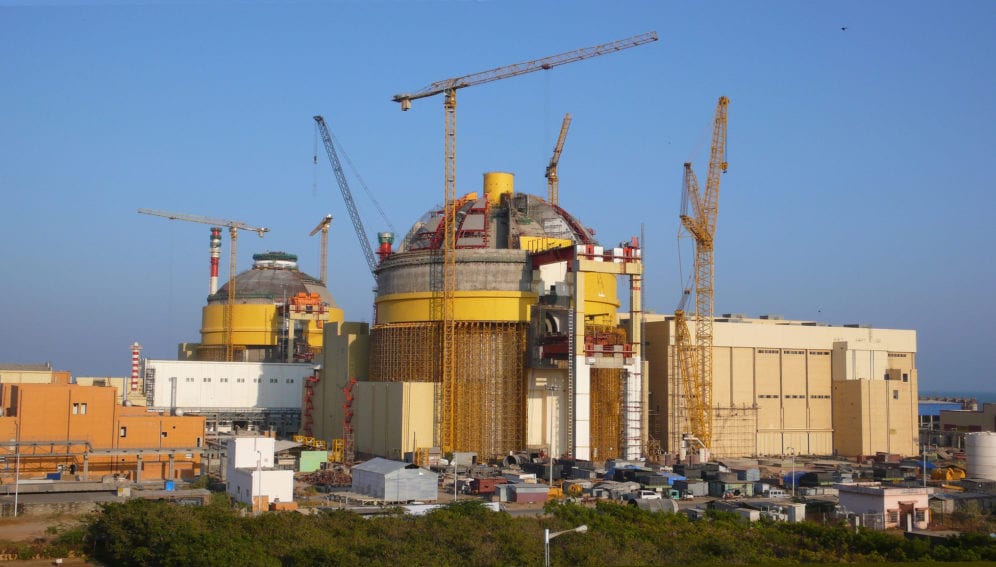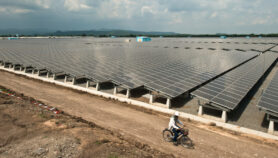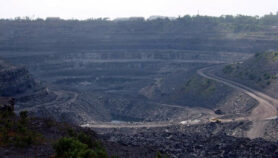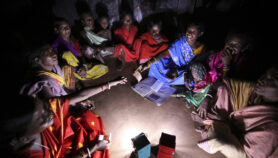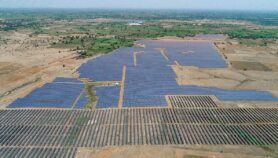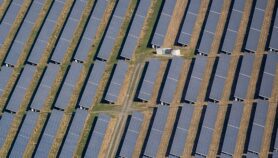Send to a friend
The details you provide on this page will not be used to send unsolicited email, and will not be sold to a 3rd party. See privacy policy.
Consensus is unlikely in the nuclear debate but openness can evolve better policies and implementation, says Nalaka Gunawardene.
South Asian countries are stepping up using and collaborating in civilian nuclear technologies. In pursuit of new opportunities, however, it is imperative that governments address safety concerns adequately.
Greater public understanding is also needed so that people can distinguish between nuclear weapons, nuclear energy generation and other nuclear applications in various spheres of development. Right now, conflation is common which, in turn, causes confusion.
Nuclear matters have long been contentious in India and Pakistan due to government secrecy surrounding military applications. Both countries possess home-built nuclear weapons. Neither has signed the Treaty on the Non-Proliferation of Nuclear Weapons which came into force in 1970. Specifics of their arsenals thus remain unknown. [1]
Nuclear energy activities are somewhat more open, though no less controversial. Both India and Pakistan have functional nuclear power plants which generate around four per cent of electricity in each country.
Opinion is divided on the cost-benefits of nuclear power. Environmental and radiation safety issues have come into sharp focus since Fukushima nuclear accident in Japan in 2011 and some new plants in South Asia have drawn sustained public protests.
Eclipsed by these debates is the use of radioactive isotopes in agriculture, food preservation, water management, healthcare and industrial processes. Beneath media’s radar, these have been going on for decades.
Our challenge is to scale up these applications while increasing the entire sector’s transparency and public accountability. Sustainable development would falter without such public trust.
Bilateral cooperation
Bilateral cooperation in civilian nuclear technologies has been increasing, both among the eight member countries of South Asian Association for Regional Cooperation, as well as between some of them and industrialised countries.
Among the most widely reported is the Indo-US civil nuclear agreement of 2007. Through this, India agreed to separate its civil and military nuclear facilities and to place the civil nuclear facilities under International Atomic Energy Agency (IAEA) safeguards. In exchange, the U.S. agreed to work toward full civil nuclear cooperation with India. [2]
During the January 2015 visit of U.S. President Barack Obama, the two countries, agreeing on the limits of nuclear liability, advanced this process further. [3]
As with its space programme, India has the most advanced nuclear technologies in South Asia. It has begun sharing that expertise with some neighbouring countries — perhaps as a way of countering China’s own efforts in this respect.
On 16 February 2015, India and Sri Lanka signed a bilateral agreement to cooperate in peaceful uses of nuclear technology. Under this, India will help the island nation build its nuclear energy infrastructure, upgrade existing nuclear technologies and train specialised staff. The two countries will also collaborate in producing and using radioactive isotopes. [4]
According to the Reuters news agency, “India could also sell light small-scale nuclear reactors to Sri Lanka which wants to establish 600 megawatts of nuclear capacity by 2030”. [5]
Sri Lanka has no nuclear reactors, even though the option has been under discussion for some years. It generates electricity from hydro and thermal (coal and diesel) power plants.
The full text of the Indo-Sri Lanka nuclear agreement has not been made public. Sri Lanka’s minister of power and energy clarified that it does not allow India to unload any radioactive wastes in Sri Lanka. He also assured that all joint activities will comply with standards and guidelines set by the IAEA. [4]
Sri Lanka has already signed a memorandum of understanding on nuclear cooperation with Russia, while another with Pakistan is being worked out.
Similarly, Bangladesh forged an agreement with Russia for the building of two 1,000 megawatt reactors, with construction for the first to begin in 2015. [6]
China factor
Pakistan, meanwhile, has been forging closer nuclear cooperation with China. That builds on decades of atomic research links going back to the 1970s.
In November 2013, Pakistan started building a nuclear power complex in Karachi with China’s help. The US$ 9.59 billion facility, when completed in six years, will generate 2,200 megawatts of electricity — which is much needed to reduce chronic power shortages. [7]
Since then, media reports have talked of China planning to set up three more nuclear reactors in Pakistan.
The New York Times saw Sino-Pakistani civil nuclear cooperation as a “growing counterpoint to [the] nuclear axis between the U.S. and India in recent years that Pakistani officials have seen as an irritant and Chinese officials have seen as a geopolitical challenge”. [8]
Ansar Parvez, chairman of the Pakistan Atomic Energy Commission, says Pakistan aims to generate 8,800 megawatts of nuclear energy by 2030. [6] But Pervez Hoodbhoy, a Pakistani nuclear physicist and social activist, cautions that his country is treading on dangerous ground.
He recently wrote: “The reactors to be built in Karachi are a Chinese design that has not yet been built or tested anywhere, not even in China. They are to be sited in a city of 20 million, which is also the world’s fastest growing and most chaotic megalopolis. Evacuating Karachi in the event of a Fukushima or Chernobyl-like disaster is inconceivable.” [9]
Hoodbhoy argues that Pakistan should instead invest in renewable energy sources, taking advantage of recent advances in photovoltaic technology, efficient windmills and smart grids. He points to India’s goal of developing a solar capacity of 100,000 megawatts by 2022.
Public fears
Putting the nuclear genie back in the bottle is not realistic. Instead, it now needs to be managed carefully.
Following the Fukushima disaster, public apprehensions on the safety of nuclear power plants have risen. Governments must be sensitive to public fears and protests even as they seek to ensure long-term energy security.
For example, the Kudankulam Nuclear Power Plant in Tamil Nadu, southern India — which started supplying to the national power grid in mid-2013 — has attracted sustained public protests for several years. [10]
Local people have radiation safety concerns — shared by Sri Lanka, located only a small stretch of sea away.
At one point, former Indian Prime Minister Manmohan Singh blamed foreign-funded non-governmental organisations for causing delays in commissioning the plant. He saw protests as being orchestrated by “groups that did not appreciate India's growing energy requirements”. [11]
Praful Bidwai, one of India’s leading anti-nuclear activists, says the protests have tested his country’s democracy. He has been vocal about the violent police response to protestors. [12]
As with genetically modified organisms, polarised opinions and entrenched positions characterise the nuclear debate. Consensus is unlikely, but greater openness can help evolve better policies and implementation.
Nalaka Gunawardene is a Colombo-based science writer, blogger and development communication consultant. He is also a trustee of SciDev.Net. The views in this column are his own.
This article has been produced by SciDev.Net's South Asia desk.
References
[1] Treaty on the Non-Proliferation of Nuclear Weapons (NPT). UN Office of Disarmament Affairs website. Accessed 23 February 2015.
[2] Indo-US civil nuclear cooperation. Website of the Department of Atomic Energy, Government of India. Accessed 23 February 2015.
[3] India takes its own path on energy and climate change. By Ranjit Devraj, SciDev.Net 2 February 2015.
[4] Indo-Sri Lanka Civil Nuclear Agreement. Summary on the website of Sri Lanka Atomic Energy Board, 23 February 2015.
[5] India seals nuclear energy pact with Sri Lanka, hopes to push back Chinese influence. Reuters, 16 February 2015.
[6] World Nuclear Association
[7] Pakistan, China Discuss 3-Plant Nuclear Energy Deal. The Diplomat, 21 January 2014.
[8] Pakistan Breaks Ground on Nuclear Plant Project with China. The New York Times, 26 November 2013.
[9] Obama’s N-mission to India. By Pervez Hoodbhoy. Dawn, 31 January 2015.
[10] Anti-Kudankulam activists to raise protest to next level. The Hindu. 17 August 2013.
[11] India PM Manmohan Singh blames anti-nuclear protests on US NGOs. BBC Online. 24 February 2012.
[12] India must listen to anti-nuclear protesters. By Praful Bidwai. Dawn. 4 October 2012.


